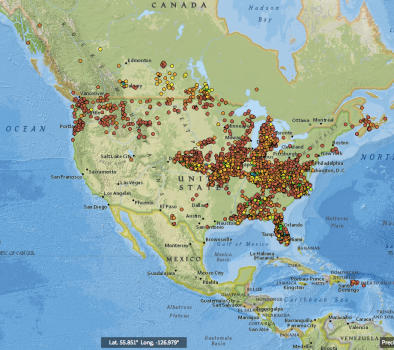Record heat put thousands of Californians in the dark Friday. Scientists predicted this from climate change.

Temperatures shot up over 110 degrees in Southern California on Friday, obliterating all kinds of long-standing heat records, and the lights went out for tens of thousands of customers. Californians were powerless, without air conditioning, in the hottest weather many had ever experienced.
Climate scientists have known this was coming, and it may only be the beginning.
“We studied this a long time ago . . . now our projections are becoming reality,” tweeted Katharine Hayhoe, a climate scientist at Texas Tech University.
In 2006, Hayhoe and colleagues published the study “Climate, Extreme Heat, and Electricity Demand in California” in the Journal of Applied Meteorology and Climatology.
“Over the twenty-first century, the frequency of extreme-heat events for major cities in heavily air-conditioned California is projected to increase rapidly,” the study said. It warned that as temperatures soared, electricity demand would exceed supply.
...
Multiple analyses have shown that the strength of heat domes, the bulging zones of high pressure that are the source of extremely high temperatures, has trended upward in recent decades.
An analysis conducted by meteorologists at the National Weather Service in State College, Pa., and Pennsylvania State University found an increase in the intensity of heat domes over the entire Northern Hemisphere during the summer months from 1979 to 2010.
The intensity of heat domes is evaluated using a measure known as “geopotential height,” which is the height in the atmosphere at which 500 millibars of pressure occur. The higher this pressure level is, the hotter it is, because hot air is less dense than cold air and fills more space. The most intense heat domes, which are extraordinarily rare, feature geopotential heights exceeding 6,000 meters at their core.
Friday’s heat dome exceeded the 6,000-meter geopotential height threshold in several locations in the Western United States and was nearly that high (5,940 meters or higher, as shown within the red outline in the image below) over a sprawling area from Southern California to southern New England.
Related Content




